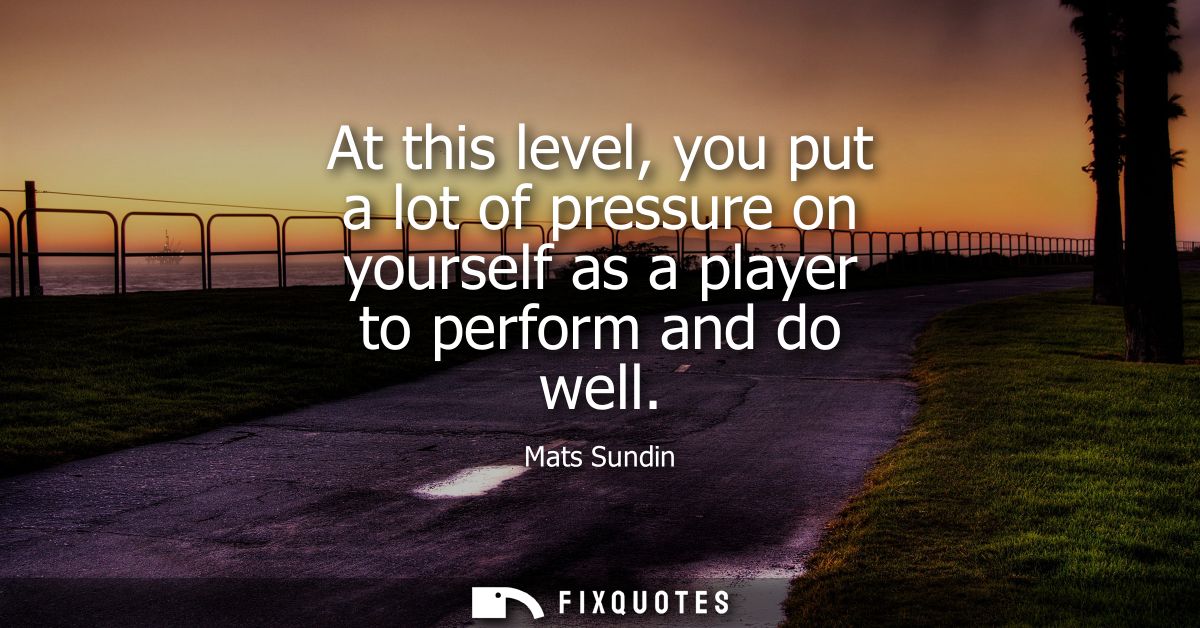"At this level, you put a lot of pressure on yourself as a player to perform and do well"
About this Quote
At the highest tiers of competition, talent grants entry but internal standards dictate longevity. Sundin points to the relentless self-scrutiny that elite performers carry into every shift, drill, and off-ice hour. Coaches, fans, and media apply pressure, yet the fiercest demand often comes from the athlete’s own expectations: the need to honor hard-won skill, to justify opportunity, to avoid letting teammates down. That pressure is both compass and crucible. It sharpens focus, heightens preparation, and transforms vague ambition into measurable habits, while simultaneously threatening to narrow identity to a single outcome on the scoreboard.
Self-imposed pressure becomes productive when it is channeled into process over perfection. The veteran learns to translate “do well” into controllable actions: eat, sleep, train, recover, communicate, review film, repeat. Anxiety recedes when performance is framed as executing roles within a system rather than proving personal worth. Leadership intensifies the burden, captains feel responsible for culture as much as results, so they model composure after mistakes, invite honest feedback, and create psychological safety where high standards coexist with permission to fail forward. Rituals, breath work, and pre-performance routines anchor attention; deliberate recovery and life outside the rink prevent the game from swallowing the person.
The message reaches beyond hockey. Surgeons, musicians, founders, anyone operating “at this level”, learn to calibrate pressure like a tool: too little, and complacency creeps in; too much, and fear freezes skill. Mastery lies in setting standards that stretch without breaking, tying identity to effort and growth, and remembering the original joy that made excellence possible. Performance thrives when responsibility is embraced, not as a weight to carry alone, but as a shared commitment to craft. That equilibrium is dynamic; it demands constant adjustment across slumps, injuries, and aging, converting pressure from a source of dread into a steady pulse that sustains excellence over long seasons.
More details
About the Author

